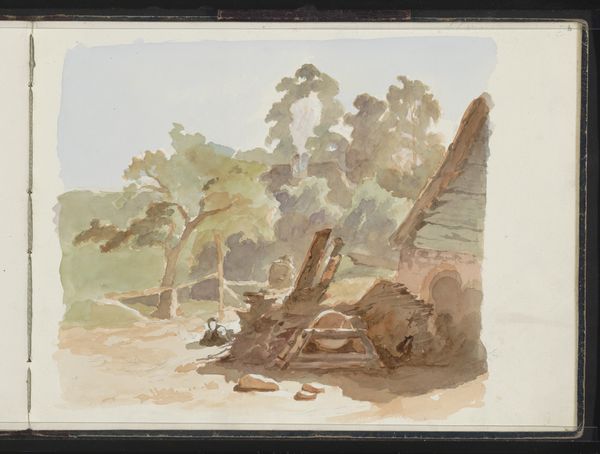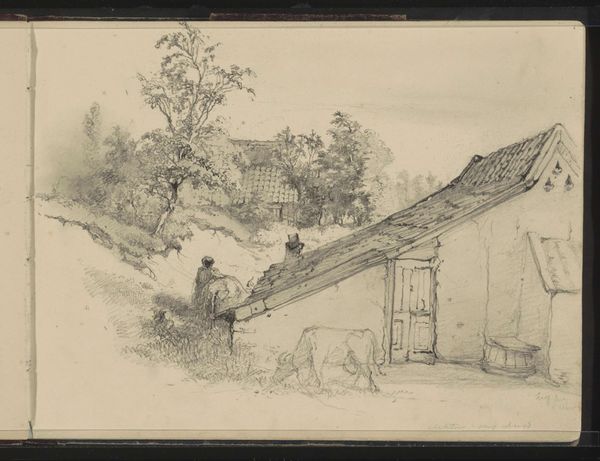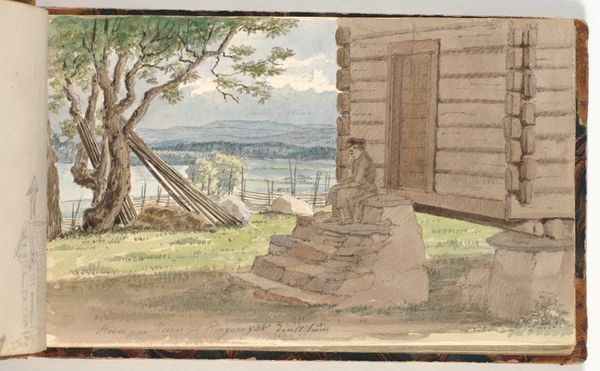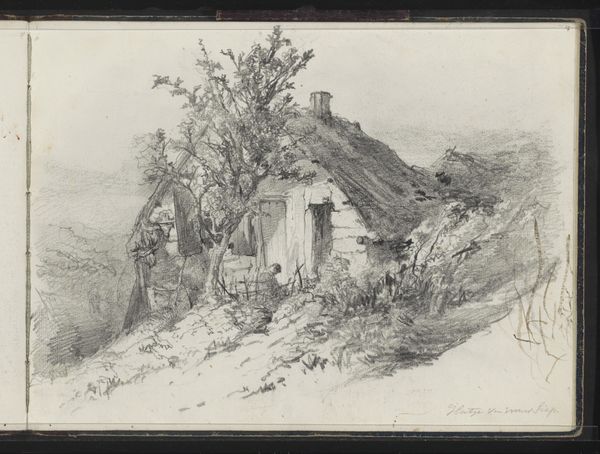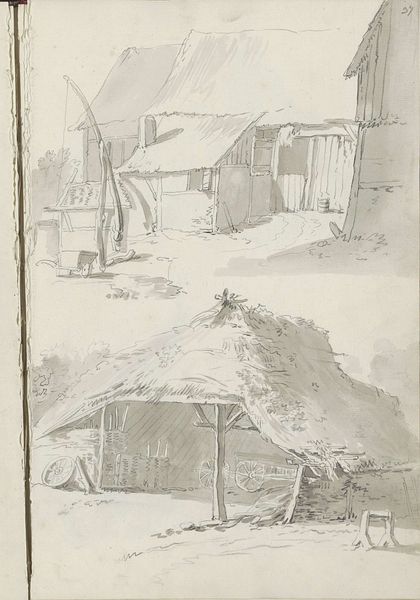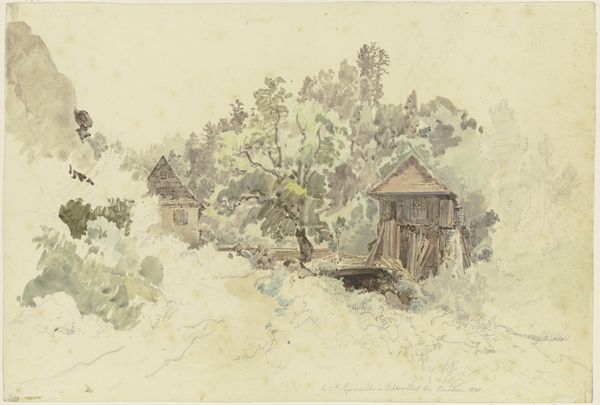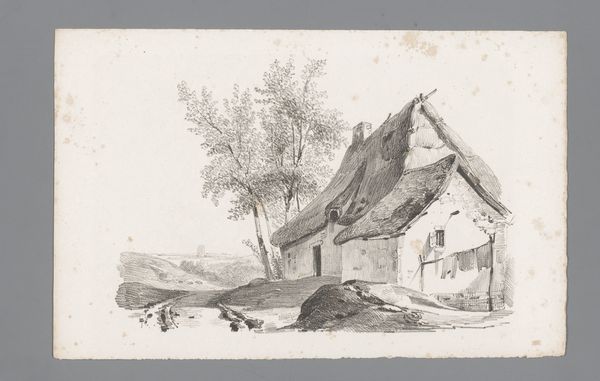
plein-air, watercolor
#
plein-air
#
landscape
#
watercolor
#
genre-painting
#
mixed media
#
watercolor
#
realism
Copyright: Rijks Museum: Open Domain
Curator: Maria Vos's watercolor, "Scuffling Chickens in a Yard," created around 1864-1865, offers a glimpse into rural life. Editor: My initial impression is one of gentle decay; a muted color palette suggests a melancholic and introspective mood, as though time is quietly withering away at this humble farm. Curator: Interesting. From a material perspective, the sketch breathes realism by exploring a scene and rendering it with quick plein-air style applications of color on paper. How labor defines that image and vice versa fascinates me. Vos seemingly values the working barnyard—note the ramshackle wooden fence in the yard; what symbolism do you perceive there? Editor: The chickens, rendered with subtle strokes, emerge as potent symbols of simple joys amid modest resources, echoing centuries of folklore that associate fowl with rustic blessings. In the past such iconography also implied deeper anxieties, but the tone here seems positive. The worn fence could signify boundaries, yes, but also the constant interaction between humans and the natural order in this small setting. Curator: Right, because labor informs the imagery in terms of depicting human use—versus just “nature." We can even speculate about watercolor and plein-air—quick, economical. Not costly oil paints or precious canvas. How might those constraints themselves convey an unspoken commentary about rural production? What’s *allowed* given the resources. Editor: Indeed! The deliberate choice of chickens over, say, a majestic stag further grounds the scene in unpretentious simplicity. This makes her work an embrace of unassuming subjects, and elevating them with delicate watercolor strokes into icons of contented domesticity, like a psychological mirror. Curator: I see the reflection, then, of a culture working its way towards new materials, towards depicting the "real." The choice of this scene, and this method, marks a deliberate departure from, let's say, more classical forms of commissioned portraits or large scale landscape works. What do we do with this conscious divergence as scholars? Editor: Ultimately, Vos’s work asks us to reassess beauty. Its understated iconography pulls us into intimate reflections upon what we truly value—and its humble aesthetic only makes it that much more affecting. Curator: And for me it becomes about appreciating the means to her artistic production—the accessibility and immediacy—and their profound impact on expanding our perception of artistic merit in 19th century life.
Comments
No comments
Be the first to comment and join the conversation on the ultimate creative platform.



